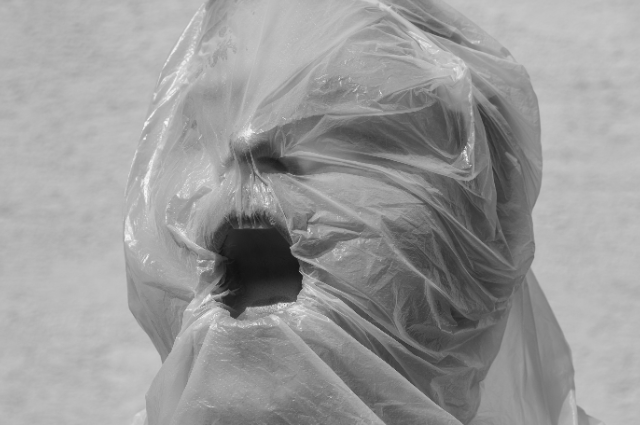
Photo by Zoran Borojevic on Unsplash
We know about the Stone Age and Iron Age–they were named so because most of what they used was made of those materials. So would it be wrong to call this age we live in the Plastic Age?
I stood up with this same thought that arose in my mind a few days ago. To justify this statement, I took a look around me. I started to search for articles of plastic–and it didn't take a second to find a LOT of them. Starting with my jacket, it had a zipper made of plastic. Then, I gazed towards my table. There, my pens, my mechanical pencil, my glue bottle, my pencil case, sketch pens, watercolour boxes, colours and even my writing pad was made of plastic! My hot glue gun, my charger, some of my decorational pieces, and even my holder wad also of plastic. Then towards my sister's makeup table, I found even more articles of plastic. Her Body Lotion Bottle, Lip Balm Bottle, Face Cream Boxes, Rose Water Bottle, Coconut Oil Bottle, Eye Shade Box, Face-pack jar (or whatever you call it) and so much more–were of that material only–plastic.
In the living room, my Old TV's two remotes, the TV's buttons, and even the on-off fan and light switches were plastic. The clock, the LED Light, and so much more were not completely of Plastic but had an enormous amount of plastic components in them.
Even in the kitchen, plastic was not absent, but present, and frankly very dominant. Numerous Spoons, Jars, Bowls, Cups, Plates, Baking Trays, and Lunch-boxes were of plastic. Even on my balcony, the pots in which some of my plants were also of plastic.
Sitting down again, I think again. As my house was not a very big house, and not too many people lived there, there were so many articles of plastic. So I imagined, how much more could be of plastic in larger houses. I thought of Furniture Chairs, Stools, Tables, Dustbins, Faucets, Tanks, Toys, Tents, Bags, Sheets, Fittings, Buttons, Mugs, Buckets, Kettles, and Storage Boxes.
All these items are of Plastic. And almost every item has a plastic counterpart, which can almost work the same or even better than the original item. For example, furniture. Wooden Furniture is expensive, is not waterproof and bugs can feast on it easily. They are also heavy for a lot of time, and thus, not easy to move. While plastic furniture can be in any desired colour, would be waterproof, easy to carry and a lot of time stackable too, and easy to store. And if a wooden chair breaks, it would not be easy to repair it. But a plastic one can be recycled into a new one.
Books are being heavily replaced by e-books these days. Classes have turned online. And even writing is being replaced by typing. And most of the components of our devices are also plastic.
Glass is replaced by transparent plastic sometimes too.
So is it wrong to call this the 'Plastic Age' still?
Today, Plastic is one of the most used items. It can replace every other material. It is unlike any other. It can be heated and reformed. It can be coloured into any colour. It is lightweight. It is waterproof. And the main reason why it is so popular: it is cheap.
In today's world, where inflation is high, and people want cheap things, plastic is becoming a superhero.
But everything has a downside. Then non-biodegradable quality of plastic, for example. Plastic is waterproof too as mentioned earlier. Which means neither the earth can decompose it, nor the water. It stays as it is everywhere.
This causes problems across the globe. It is blocking rivers, and in turn, polluting them. Animals mistakenly eat Plastics thinking they are food, but most of them are unable to digest it, and many times, die.
Also, the production of plastic is very harmful. It produces dangerous chemicals and gases.
The only way one can compact plastic is by heating it, for which people burn it. But plastic still does not completely turn into ashes, but rather only compacts. And this burning produces extremely dangerous gases like Carbon Dioxide. People who do not know about the effects of burning plastic and do not know how to depose it properly burn it. This increases pollution more and more each day.
The question arises–with this rate of plastic replacing every other item in sight, is there any way to stop these things from happening?
The above-given cons of plastic are as such as a few pebbles in a mountain of them–many more such cons exist which have a much more dangerous effect on humans.
Recycling is a solution. It refers to when people reform plastic articles into new ones with the help of their property to reform things on heating them. Today only 9% of all plastics are recycled. Rest goes into places like rivers, seas, oceans, and soil cover or gets burnt, causing pollution.
Another is we use items like wood and iron again instead of plastic. But this is not possible completely because plastic is a very cheap material, available to all, and certain items can only be made by plastics. Plastics also allow us to make items easily in comparison to other items.
Today, only a few solutions are left. And now, I leave it to you to find the solution and help us to
